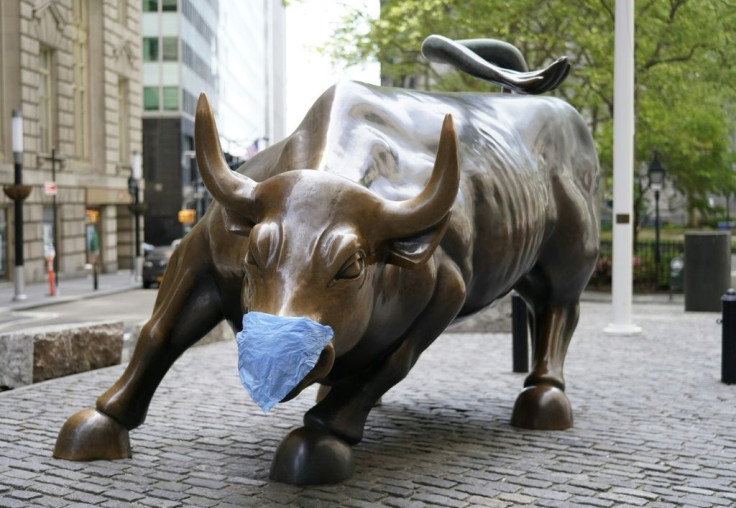Goldman Sachs Profits Surge Despite Pandemic
Goldman Sachs reported strong third-quarter results Wednesday, nearly doubling profits and reflecting little of the vulnerability that has plagued other corners of the economy during the pandemic.
Key strengths to the money machine at Wall Street's iconic investment bank included a "significant" increase in initial public offerings and a surge in revenues from its markets division.
The strong Goldman numbers easily eclipsed mixed results from Bank of America and Wells Fargo, which are much more heavily focused on consumer lending.
Both Bank of America and Wells Fargo saw a profit hit following Federal Reserve interest rate cuts to support the economy, offset somewhat by much lower reserves set aside for bad loans compared with the prior two quarters.
Bank executives have warned that the US recovery could falter if Washington fails to enact additional stimulus following the expiration of key programs to support unemployed workers and embattled industries.
At Goldman, net income came in at $3.5 billion, up 94 percent from the year-ago period and topping analyst estimates by a wide margin. Revenues rose 30 percent to $10.8 billion.
Goldman set aside $278 million for credit losses, well below the $1.6 billion it allotted for bad loans in the prior quarter, when the most severe Covid-19 restrictions were in effect.
Trading has generally been a strength for large banks during the pandemic, boosting commission fees as markets have swerved. Volatility "declined modestly" in the third quarter, Goldman said.
Goldman's revenue rose in all four divisions compared with the year-ago period. Revenues from equity investments soared 139 percent from the year-ago period, reflecting an ascendant stock market during the period.
Chief Executive David Solomon lauded the company's performance amid the downturn, adding that he would maintain "vigilance" given "potential weakness in the broader economy."

Bank of America reported a 16 percent drop in quarterly profits to $4.9 billion on a 10.8 percent decline in revenues to $20.3 billion. The drop in profits reflected much lower net interest income following Fed rate cuts.
Bank of America set aside $1.4 billion for bad loans, which was above the year-ago level, but well below the $5.1 billion held in the prior quarter.
Some of the funds are to cover loans to travel and entertainment companies that have suffered as social distancing restrictions have depressed demand. But the bank released $179 million in consumer banking that had been previously reserved due to an improving economy.
"We're expecting better performance from where we were 90 days ago when we set the reserve," Chief Financial Officer Paul Donofrio said on a conference call with analysts. "Look, having said that, there's still a lot of uncertainty in this current environment."
Wells Fargo reported profits of $2.0 billion, less than half the $4.6 billion in the year-ago period, but an improvement on the $2.4 billion loss in the second quarter.
Revenues fell 14.3 percent to $18.9 billion.
As with Bank of America, Wells Fargo was hit by a big drop in net interest income. However, provisions for credit losses were flat compared with the prior quarter.
A Wells Fargo presentation showed a lower sum of overdue loans in the commercial and industrial segments, but a jump in overdue loans for commercial real estate clients.
"Our third quarter results reflect the impact of aggressive monetary and fiscal stimulus on the US economy," said Wells Fargo Chief Executive Charlie Scharf.
"As we look forward, the trajectory of the economic recovery remains unclear as the negative impact of Covid continues and further fiscal stimulus is uncertain, but we remain strong with our capital and liquidity levels well above regulatory minimums."
Shares of Goldman rose 0.2 percent to $211.23 by the close of markets, while Bank of America fell 5.3 percent to $23.62 and Wells Fargo dropped 6.0 percent to $23.25.
© Copyright AFP 2024. All rights reserved.





















